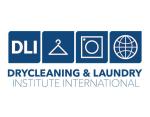CHICAGO — The labor market is tight, and it’s not about to loosen up anytime soon, says Dick Finnegan, the CEO of C-Suite Analytics. During his webinar “Five Turnover-Cutting Steps You’re Not Doing Today,” hosted by the Society for Human Resources Management (SHRM), Finnegan stated the realities for company leaders, and illustrated new ways to think about the situation to keep employee turnover low.
In Part 1 of this series, we looked at the reasons why business owners are having an increasingly difficult time navigating the labor market. Today, we’ll examine why most employees quit their jobs and how to view the situation in a more productive light.
Two Ways to Approach Retention
Finnegan says there are two ways to approach the subject of employee retention, with one being more effective than the other in today’s labor market.
The first is the traditional method, using a company’s HR head or department to handle the situation. This means HR will conduct actions such as engagement, exit, salary and benefit surveys, as well as setting up employee appreciation activities. The problem with this approach, Finnegan says, is that it is a “one-size-fits-all” solution.
“We’re all looking for ‘the thing,’” he says. “What’s ‘the thing?’ We did a survey and people want more recognition. We have an employee committee. We have an employee of the month. We have Employee Appreciation Week. We do these things, and a year later, nothing has changed.”
The solution? After years of actively studying the situation, Finnigan believes that management, rather than HR, has to take an active hand in employee retention. “Have the leaders drive retention by building one-on-one trust with each employee,” he says. “The No. 1 reason why employees stay or leave, or for that matter engage or disengage, is how much they trust their immediate supervisor.”
Why Do People Quit?
Finnegan pointed to a study conducted by Connexus, a global consulting firm. “They interviewed 1,000 people who had voluntarily quit across all industries,” he says. They were asked about topics such as their pay, benefits, development, advancement opportunities and relationships with supervisors, and it was found that supervisor relationships largely colored all other aspects of their job.
“The more you liked your boss, the more you liked the pay, benefits, development and advancement opportunities,” Finnegan says. “If your boss was a jerk, you didn’t like those elements. The prism or the lens through which employees see your company is how they see their relationship with their supervisor.”
To illustrate the point, Finnegan said the two most important hours of the day for turnover or engagement are the two hours immediately after work.
“You’ve transitioned to your personal life,” he says, “but you can’t do it without the interruption of thinking about work. It’s involuntary because your brain is exhausted and your body’s tired. The more often you like those two hours, the better. If you don’t like them, you’re more likely to become disengaged.”
Thinking about what is talked about over dinner during these two hours, Finnegan says, paints the picture of the problem many companies have in retaining employees.
“When somebody asks, ‘How was your day, dear?’ nobody says, ‘My day was OK — I just wish we had pet insurance,’” he says. “Nobody cares, but companies keep taking the bait of saying, ‘Here’s a new benefit. Here’s a new one-size-fits-all thing.’”
Finnegan says that what employees generally talk about are, in order, their leaders, their colleagues and their duties. “Even those of us who love hard data must acknowledge this, which reinforces the old adage that people don’t quit jobs, they quit bosses. And it is those bosses they talk about over dinner.”
He then highlighted two other surveys that shed more light on this situation. A Gallup poll listed that the No. 1 reason employees quit was because of engagement and culture (only 14% of employees said they quit because of pay), and a Massachusetts Institute of Technology study found that the No. 1 reason was because of a toxic corporate culture (pay was reason No. 16).
“When you dig into how Gallup defined ‘employee engagement and culture,’ and you dig into how MIT defined ‘toxic corporate culture,’ here’s what you find,” Finnegan says. “It’s supervisors.”
First-Hand Experience
Finnegan had personal experience with this finding when he worked as the head of HR for a large banking company.
“The CEO called me in,” he says, “and said the dreaded sentence: ‘Turnover is high. HR, go fix it.’”
After digging into the issue, Finnegan started to see the roots of the problem. “I didn’t realize at the time that I had stumbled upon an almost ideal academic research project,” he says.
The issue wasn’t company-wide, he discovered. “We had some branches with 75% turnover, and some had 10% turnover, and we had one variable. It wasn’t an HR problem; it was a management problem.”
While this answer wasn’t to the CEO’s liking — Finnegan later found out that the CEO had tried to have him fired — the idea started to gain steam in the company. “We met with the branch managers, showed them all the data and said, ‘The outcome is that you have a goal to cut turnover. Our job [in HR] is to track to see if you make it. Our job is not to pay people more or to train more people.”
While there was initial resistance to this new mindset, changes in the way employees were managed started to show up in the data. “Three months later, turnover had fallen 19%, and we saved over $4 million,” Finnegan says. “What that taught me was that everything I’d learned in HR about cutting turnover was wrong.”
Come back Tuesday for the conclusion of this series, where we’ll list concrete actions owners and leaders can take to improve employee retention at their companies. For Part 1 click HERE. For Part 2, click HERE.
Have a question or comment? E-mail our editor Dave Davis at [email protected].




























































































































